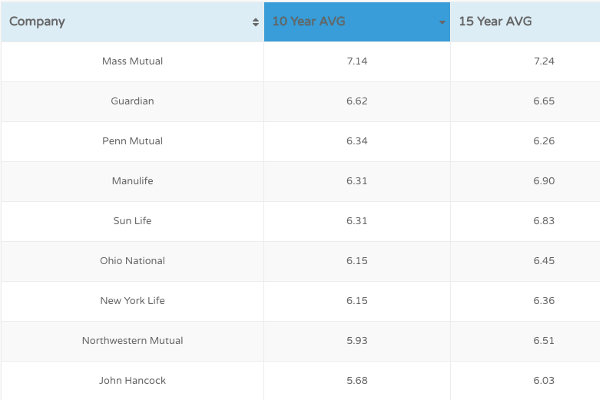Are you thinking about life insurance? You may also wonder about the correct policy limit.
If so, consider whole life insurance for $25,000. The whole life insurance $25,000 cost may be higher, but you'll get higher benefits in return.
Whole life will provide coverage throughout your lifetime. You will receive coverage as long as you pay the premiums on time. You can choose from various tiers, such as $10,000, $25,000, $50,000, or $100,000.
It's the best idea if you want to provide more money for your surviving family members. Funeral costs are higher than you may think. After burial expenses, your family may have no money to survive.
This article will explain the pros and cons of a $25,000 whole-life policy. Let's explore.
Why Should I Get $25,000 Whole Life Insurance?
A $25,000 policy is a better option if you're concerned about funeral costs. The average funeral cost is $10,000. If you get a $10,000 policy, you would have nothing left to cover additional expenses, such as:
- Income replacements for a spouse or loved one
- Gifts to loved ones
- Mortgage protections so surviving family members can stay afloat
Additionally, factor in rising funeral costs and increased living expenses in general. A higher policy is a hedge against inflation and unexpected costs.
Further, a $25,000 policy leaves money left over if you choose a cheaper burial option, such as cremation. For example, you can use the remaining money to replace the income you would have contributed to the household.
Income Replacement
If you perish, your significant other could face sudden financial hardship without your income. However, a high-value policy would replace your income for a brief time. Therefore, your loved one can maintain their living standard of living.
The $25,000 won't be enough to cover your income for a longer period, but it will give your loved ones the breathing room they need.
Mortgage Security
If you own a home, a $25,000 policy can help your spouse or loved one through a mortgage protection plan. This option allows survivors to make additional payments temporarily until they can find a long-term solution. As a result, they don't have to worry about foreclosures.
If you have a small mortgage balance, the $25,000 option could be enough to pay off the mortgage, allowing your family members to own the home free and clear.
The Gift Option
In other cases, you can gift the policy to a family member.
- Example: After funeral expenses, you can set up a college fund for your grandchild.
Also, you can send them the money to use how they see fit. Moreover, it's a great option if you have any family members struggling to pay off student debt.
Who Doesn't Need a $25,000 Policy?
First, you don't need a large policy if you're single with no dependents. A $25,000 policy primarily ensures that surviving family members have enough money to survive.
It's also futile if you don't have any heirs. This type of policy gives policyholders the chance to bestow financial security to loved ones.
Without dependents, a higher policy is a waste of money, regardless of the policy's affordability. Further, this type of policy is needless if you have no debts.
If you don't intend to incur any debts in the future, don't worry about this policy option. Many people choose high-value policies because they fear leaving behind high debts for their family members.
Finally, you don't need a hefty insurance policy if you have sizeable savings. A large savings account can pay for various expenses, such as funeral costs or mortgage payments. Think of a whole-life policy if you have few reserves in the bank.
What Makes Whole Life Insurance Better than Term Life Insurance?
A whole life insurance policy generates cash value as you pay for the policy. Your cash value increases each time you pay a monthly premium. The value accrued allows you to take out a certain amount of money throughout your lifetime.
- Example: If you sustained an injury and have a high medical bill, you can invoke your policy to see how much the cash value will cover your expenses. The value taken out will be in the form of a loan.
You should also pay back the loan on time, as failing to do so will reduce your payout benefits. Since interest accumulates on the loan, determine the payments before you use the policy.
Plus, a whole policy will never expire as long as you pay the premiums. Term life insurance comes with term limits.
You'll pay the premium for a certain amount of time (i.e. 10 or 20 years). Additionally, term life policies don't produce cash value.
Plus, you must renew the policy when it expires. Further, there's a chance that the insurance company may not renew your application. However, your provider will renew the policy automatically in most cases.
As you age, the premium will be higher upon renewal. With permanent insurance, your premium will remain the same.
With that, whole-life policies are pricier than term-life policies. However, permanent life insurance is affordable for many people.
What Are the Rates of a $25,000 Policy?
The policy cost depends on such factors as your age. Monthly premiums could break down as follows for men:
- 25: $28
- 30: $31
- 35: $35
- 40: $40
- 45: $48
- 50: $58
- 55: $72
- 60: $90
- 65: $115
- 70: $155
- 75: $219
- 80: $285
The following rates apply to females:
- 25: $27
- 30: $30
- 35: $34
- 40: $39
- 45: $45
- 50: $53
- 55: $66
- 60: $82
- 65: $104
- 70: $142
- 75: $193
- 80: $248
As such, your premium will be higher as you age. Additionally, rates for females are slightly cheaper than rates for males. To get the best rate, choose a high-rated company that has the best offer.
What Type of Policy Should I Choose?
You should choose your policy based on your health condition. Overall, there are three types of life insurance policies:
- Simplified Issue: This means you will answer some minimal questions about our health. You don't have to undergo a medical exam. This is a faster way to obtain a policy.
- Guaranteed Issue: You don't have to answer any questions or undergo a medical exam. The insurance company cannot review your medical or prescription records. However, this policy choice may come with a waiting period.
- Medically Underwritten: Conversely, the insurance company will examine your medical history in depth. They'll also examine such factors as demographics, lifestyle choices, and future medical needs.
For a simplified issue, you may pay a higher price. This is because carriers don't know much about your health status.
The plus side is that implied policies will pay full benefits upon a person's death. Other policies may contain graded death benefits. Graded death benefits occur when the carrier will pay a portion of the benefits within a couple of years.
If you have health issues, you can also opt for a guaranteed policy. A guaranteed policy entitles you to coverage regardless of your health. It's worth noting that waiting periods for a guaranteed policy can take up to two years.
Therefore, have an alternative plan in place if you need a policy sooner. With that, you'll receive approval regardless of the circumstances.
When it comes to medically underwritten coverage, there's a chance you can obtain a lower rate if you're a healthy person. On the other hand, you could face denial if you have extensive medical issues.
The examination process may take as little as a few days. In other cases, the process could take weeks or months.
Alternatives for a $25,000 Policy
If you choose a term life policy, you could pay a lower amount and receive a higher payout. For example, a term life policy could yield a $100,000 payout at a cheaper rate.
Moreover, the extra money you've spent on a whole-life policy could have been used to invest in mutual funds. If you can get 10% on your mutual funds, you could end up with $60,000 in the future.
Above all, you shouldn't consider an insurance policy as an investment. Its sole purpose is to provide for your family in the event of your death.
Is a Whole Life Insurance $25,000 Cost Worth It?
The whole life insurance $25,000 cost is worth it if you want to provide more security for your family. If you're only concerned about funeral costs, a $10,000 policy would suffice.
In addition to funeral costs, a $25,000 plan would pay for your family's living expenses. In general, whole-life plans allow you to take out a loan from the policy when you need it.
However, $25,000 may not be enough for many people. Years from now, a $25,000 policy may not be sufficient due to inflation. If you want more coverage, you can take out a whole-life policy with a higher sum or choose a term life policy with a higher payout.
Are you interested in a whole-life insurance plan? Click here to learn more about whole-life dividend rates.




